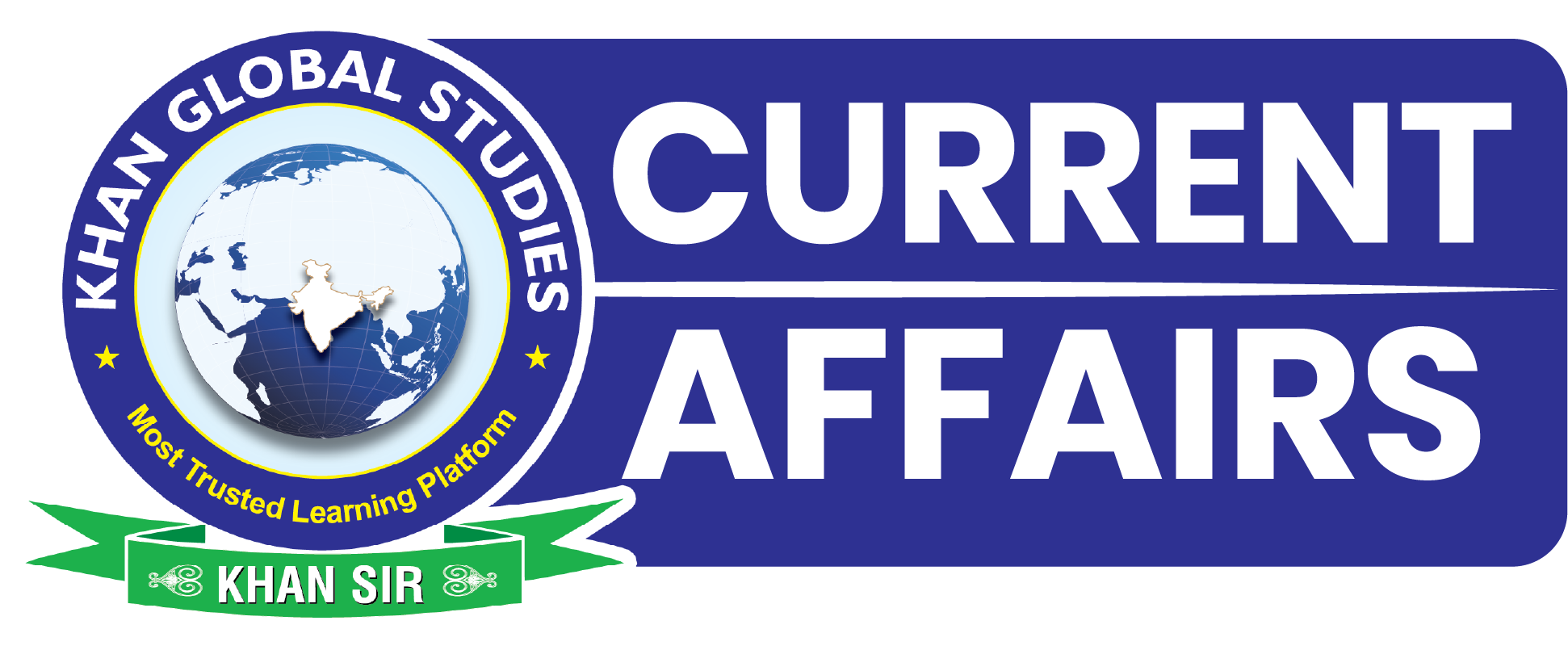Moscow Format of Consultations on Afghanistan
Context: Recently, the seventh meeting of the Moscow Format Consultations on Afghanistan was convened in Moscow to discuss regional stability, humanitarian support and counter-terrorism measures in Afghanistan.
7th Moscow Format of Consultations on Afghanistan
- This Moscow Format brings together special representatives and senior officials from Russia, Afghanistan, India, Iran, Kazakhstan, Kyrgyzstan, China, Pakistan, Tajikistan, and Uzbekistan.
- For the first time, the Afghan delegation participated as a full member and was led by the Foreign Minister of Afghanistan.
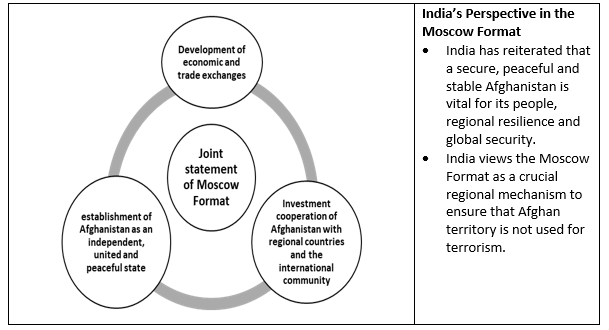
Supermoon
Context: India witnessed a supermoon across most regions on the evening of October 6 and into the early hours of October 7, marking a rare celestial event of exceptional brightness and size.
More on the News
- To promote scientific awareness and interest in astronomy, Gujarat will host a series of public outreach and skywatching events during a rare occurrence of four consecutive Supermoons from October 2025 to January 2026.
- The other three Supermoons will occur on October 6 and 7, November 5, December 4, and January 3, marking a rare celestial sequence described as a “lunar symphony”.
Supermoon
- A Supermoon occurs when the Moon reaches its full phase at the closest point to Earth in its orbit, appearing larger, brighter and more luminous than usual.
- When the Moon reaches its perigee and is directly opposite the Sun, it appears nearly 14% larger and 30% brighter than at its farthest point.
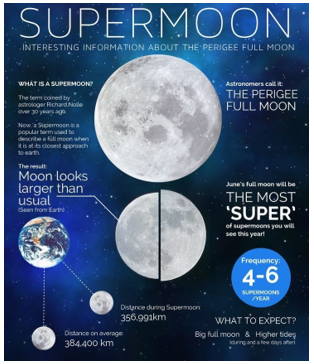
- The term was first coined in 1979 by astrologer Richard Nolle, and the 7th October’s occurrence was the first time it had happened since November 2024.
- This supermoon is known by two names – the Hunter’s Moon and the Harvest Moon.
- It is referred to as the Hunter’s Moon because as the first full moon in October, it was a time when historically preparations were made for winter in the northern hemisphere, with people hunting and preserving meats.
- It is also known as the Harvest Moon, as it rises closest to the autumn equinox on 22 September, reflecting a time when farmers would use the moon’s brightness to collect crops in the evening.
Operation HAECHI-VI
Context: The Central Bureau of Investigation (CBI) has actively participated in Operation HAECHI-VI to apprehend offenders and disrupt transnational cyber financial and online exploitation networks.
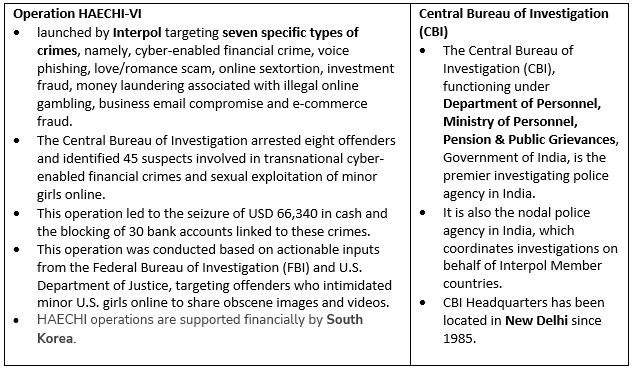
World Habitat Day 2025
Context: The Union Ministry of Housing and Urban Affairs (MoHUA) observed World Habitat Day 2025 to tackle challenges like climate change, migration, and rapid urban growth.
More on the News
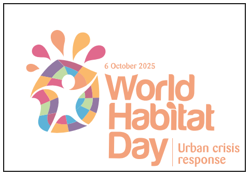
- This year, World Habitat Day was celebrated on 6th October under the theme “Urban Crisis Response.”
- The theme focused on how cities can better prepare for becoming resilient, inclusive and sustainable and also respond to challenges, including climate change, migration and urbanisation.
- Flagship initiatives such as Pradhan Mantri Awas Yojana – Urban (PMAY-U), Atal Mission for Rejuvenation and Urban Transformation (AMRUT), PM SVANidhi, and Swachh Bharat Mission(SBM) were highlighted for promoting social inclusion, economic empowerment, and climate action.
World Habitat Day
- In 1985, the United Nations designated the first Monday of October of every year as World Habitat Day to reflect on the state of our habitats and on the basic right of all to adequate shelter.
- The day highlights sustainable, scalable, and transformative solutions to urban displacement that help stabilise populations, while promoting prosperity and fostering social cohesion for all.
Nagaland Job Quota
Context: Nagaland has been trapped in a contentious debate over job reservation policy, especially reservation for “backward tribes” and the demand for “reservation within reservation.” Historical Background of Job Reservation
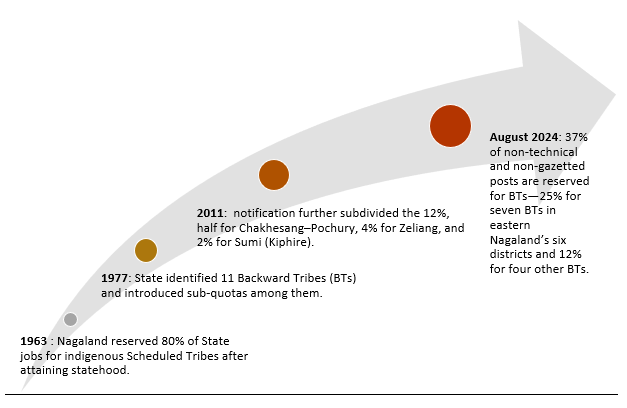
Demand of the Tribes Regarding Policy
- The Five Tribes (Angami, Ao, Lotha, Rengma, and Sumi) Committee on Review of Reservation Policy (CoRRP) submitted a memorandum in September 2024, demanding an assessment of the job quota system.
- The CoRRP, representing the apex bodies of five major tribes, argued that the 1977 policy no longer reflects Nagaland’s current socio-economic and educational conditions.
- Their core demand is to either scrap the existing reservation or allocate the unreserved 20% quota to the five tribes.
- The committee set a 30-day deadline in April 2025 for a policy review, stressing that while they do not oppose benefits to any tribe, the old policy is outdated and needs urgent revision.
Response of the Government
- The government formed a commission in September 2025, but tribes oppose the move, fearing it could dilute their reserved quotas and worsen disparities.
- The government now plans to review after the 2027 Census, but tribal groups insist on suspension of reservation till then to prevent social unrest.
Flash Joule Heating with Chlorination
Context: Recently, a study presents a flash Joule heating (FJH) combined with chlorination (FJH-Cl2) as an efficient method for rare earth elements (REE) separation and recovery from electronic waste
Flash Joule Heating (FJH) with Chlorination
- Mechanism of FJH:
- FJH involves passing a high-voltage electric current through materials, rapidly elevating their temperature to over 3000°C within milliseconds.
- This ultrafast heating ensures uniform temperature distribution and minimizes energy consumption compared to conventional methods.
- Role of chlorination:
- In the FJH process, waste materials are treated with a chlorinating agent like chlorine.
- The intense heat causes the metal oxides and other compounds in the waste to react with the chlorine.
- Due to differences in their thermodynamic properties, non-target metal oxides convert into highly volatile metal chlorides, while the target elements remain in a solid or less volatile form.
- The volatile metal chlorides evaporate and are then collected in a cold trap, effectively separating them from the desired residual solid.
- This thermodynamic and kinetic advantage allows for selective removal of undesirable metals while leaving behind high-purity REE residues.
Benefits of the Method
- Low environmental impact: It significantly reduces energy consumption, greenhouse gas emissions, and eliminates the use of water and acids required in traditional hydrometallurgical recycling methods.
- Reduced costs: A comprehensive techno-economic analysis shows that this method can reduce operating costs compared to conventional recycling methods.
- Diverse applications: The technique can be applied to recover metals from a variety of waste sources, including rare earth magnets, spent lithium-ion batteries, and coal fly ash.
